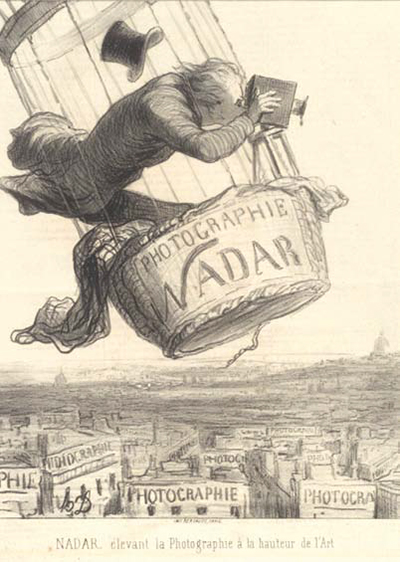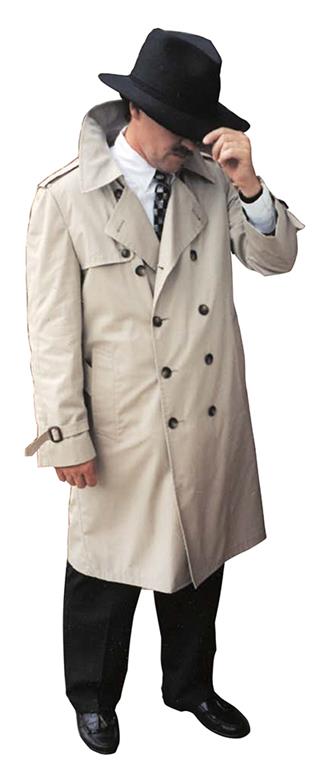Recording Pretty Pictures From Above
You might not have noticed, but… these days, things are lookin’ down. Literally.
Quick story: So, one fine day I’m sittin’ around the studio, polishin’ the capacitors and waitin’ for the daily drama to begin, when an express package is flung in my general direction. Inside—footage I’ve been told to expect, although I can’t say I was expectin’ to see it arrive on those round, shiny plastic discs we used to use. No matter… I’m up to the challenge.

Sent from Tatabánya, Hungary, these files were every bit as foreign to me as their point of origin. But strangely encoded, offbeat file formats turn an ordinary offload into a Christmas present; after all that work unwrapping it, you’re even more convinced that it’s an extra-special treat.
I quickly scrub through the files… high-def renders of a clean, pixel-perfect industrial complex and the carefully textured fields of green that surround it. Oh, those clever eastern Europeans—an animator’s tour de force, complete with little human figures inside a giant glass lobby. Only… wait… what’s that?
When I watch long enough, and the animation finishes circling the building, I notice something funny, small, off in the corner of the frame. Now, animators don’t usually model and shade geometry only to stick it off-camera; makes no sense. I go back and investigate.
It appears to be a small, Euro minivan with its side door open. There are two human figures standing nearby, eyes skyward.
And one of them is holding a remote control box… for a drone. I’ve been duped by aerial footage so smooth and clean that I mistook it for CGI. Sheesh.
The professional video industry's #1 source for news, trends and product and tech information. Sign up below.
SKY’S THE LIMIT
Of course I was confused. Short of the Goodyear blimp, and plus or minus a spare $20K, what are the odds of shooting aerial footage in the Hungarian countryside for a little project like this? Had to be 3D, in my mind.
As viewers, we’re in love with aerial footage. Aerial gives life to our nighttime dreams of floating above the earth, all-seeing, awash in the beauty of the cities, farmland and mountains below. About 20 minutes after photography itself was invented, Frenchman Gaspar Felix Tournachon hopped into a hot air balloon and started snapping—no mean feat, considering he had to bring a darkroom aloft and process his collodion plates on the spot. Our photographer-forebears have used kites, rockets and even carrier pigeons to capture the aerial images that set human imaginations aflame, and despite your self-pronounced sophistication, you’re no different, baby. You love it, too.

In my own defense, it’s no great shame to be fooled by a perfect blend of technologies, aeronautical and optical. ’Ole Mario is part of a rapidly aging well-experienced generation of camera platform liberators, after all. On our watch, giant TV cameras got small, and left their pedestals and tripods in favor of shoulders. And smaller cameras worked with traditional film gear, like jib arms, dollies and cranes. The brilliant inventor, filmmaker and performer Garrett Brown was one of us. Every year at the NAB Show, I watch him demonstrate crazy new innovations on his ever-expanding family of Steadicam products—he invented that, ya know. Molto bene.
But our “tiny” NTSC cameras weighed 35 pounds; a 4K-capable GoPro weighs less than 5 ounces. That’s a game-changer. That means that an eight-rotor remote-controlled helicopter can propel a camera into the heavens without breakin’ a sweat. Add all our other relatively newfound technologies… GPS, Wi-Fi, low-power RF… and ya gotta call it a “platform”—a self-contained ecosystem for making gorgeous pictures.
GO FOR THE GIMBAL
But wait… there’s more! The “smooth” part of my Hungarian footage is credited to another legacy aerospace technology... the gimbal. A self-leveling, stabilized mount takes away the shakes, the jaunty angles and the sudden jerks. (Decades of operating experience haven’t helped me… maybe I need my own gimbal.)
The availability of small, low-cost gimbals has made drone photography viable, and has led to innovative earthbound stabilizers, too, such as Freefly Systems’ handheld MoVI platform for small cameras. Funny how great ideas sometimes fall right out of the sky.
It ain’t simple, and that’s for sure. Not simple to outfit a rig; not simple to fly. And add two big question marks— privacy concerns and the federal government—and you realize that even the legality ain’t simple. Nobody wants drones peeking into their windows and over fences; and FAA rulemakers have said, at least for now, that remote-controlled hobby aircraft are OK, but if the same ’copter is flown for cash, you’re an outlaw. Nice.
I want one. Significant cost aside, I really, really want one. Would my drone kill or maim someone with me at the helm? I think not. But would it plunge directly into the briny deep, or wind up a musciada under an 18-wheeler? I smell financial ruin, and it’s worse than last week’s smelts. I can’t help thinkin’ about Tournachon and his balloon… and then about that intrepid lawn chair balloonist over Los Angeles a few years ago. Hmmm… garbage bags filled with helium… why not? Gasbag with a camera. If I had a nickel for every time I’ve heard that…
Mario Orazio is the pseudonym of a well-known television engineer who wishes to remain anonymous. Email him atmorazio@nbmedia.com.
